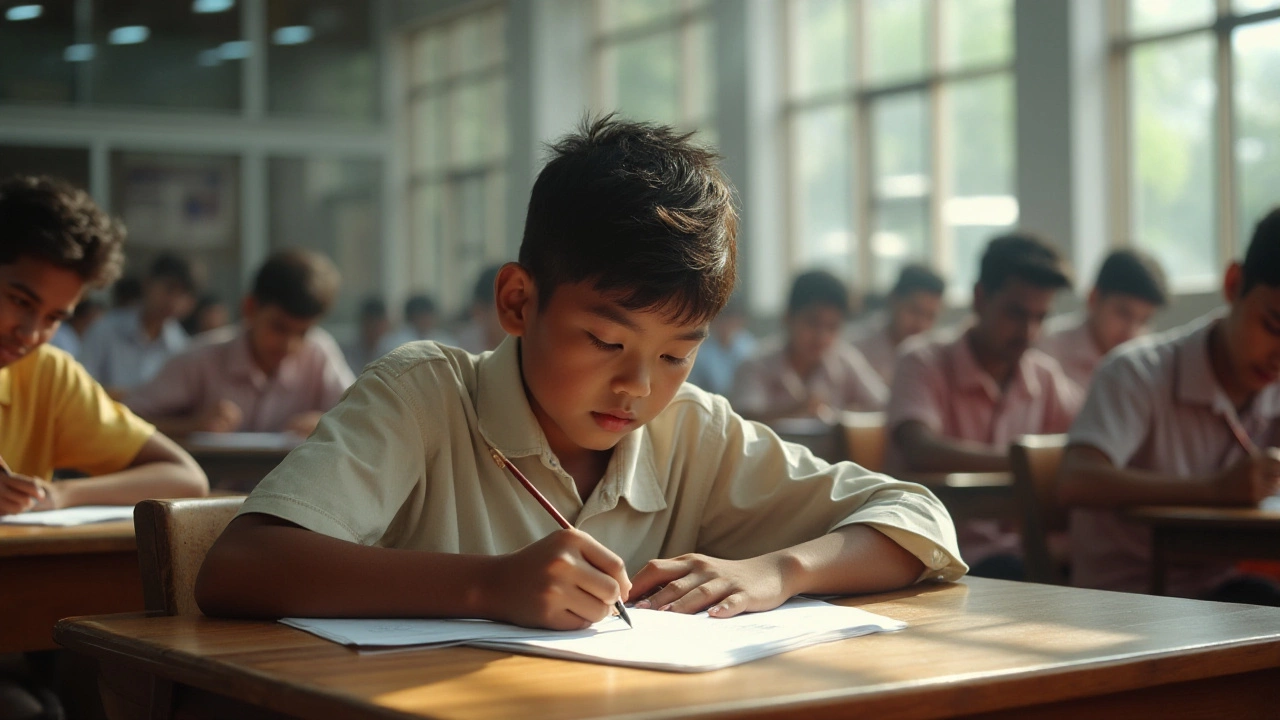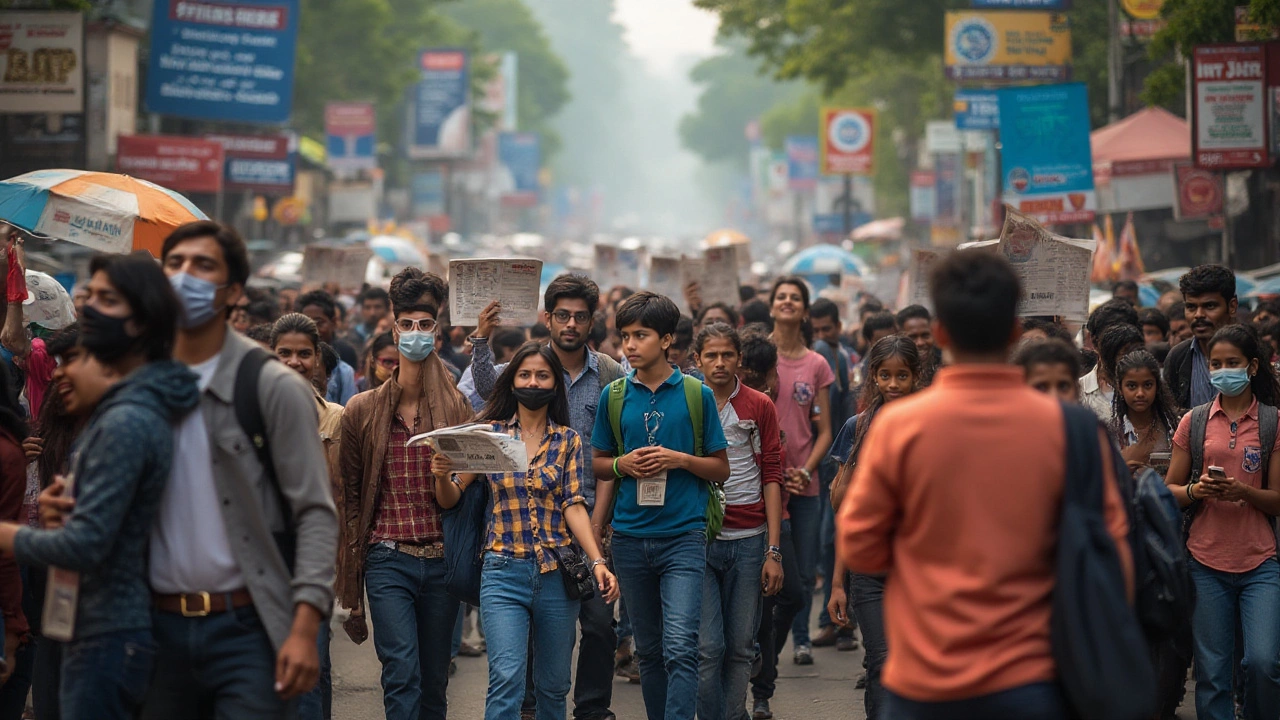The Indian Institutes of Technology Joint Entrance Examination, famously known as IIT JEE, stands as one of the most challenging entrance exams for aspiring engineers. Each year, numerous students across India and even beyond its borders participate in the hope of securing a coveted seat in one of the prestigious IITs. Understanding the scale of participation provides a glimpse into its significance and the pressure that accompanies the preparations.
The sheer number of participants showcases the popularity and the immense competition associated with the IIT JEE. Students invest not just time, but intense effort and energy to excel. While numbers fluctuate annually, the trend highlights a consistent surge driven by the dream of joining elite engineering colleges.
For those preparing, strategic planning, disciplined study schedules, and perseverance become essential. It's not just about late-night studies; it’s an entire lifestyle commitment. Yet, despite these challenges, the aspirants show unwavering determination, a testament to the enduring appeal of the IITs.
- Overview of IIT JEE Examination
- Student Participation Trends
- Preparation Strategies for IIT JEE
- Impact and Challenges Faced by Students
Overview of IIT JEE Examination
The IIT JEE, short for Joint Entrance Examination, stands as a significant academic and professional milestone for many aspiring engineers. Administered across India, this exam is a gateway to the esteemed Indian Institutes of Technology (IITs), which are renowned for their exceptional standard of education and research. The exam is split into two distinct phases: JEE Main and JEE Advanced. While JEE Main serves as a preliminary exam, qualifying students gain the opportunity to compete in the JEE Advanced, which is essentially the deciding factor for IIT admissions. This two-tier structure ensures that only the most dedicated and prepared students make it through to the next stage, creating a highly competitive environment.
The history of the IIT JEE dates back several decades, with its rigorous format and high stakes evolving significantly over the years. Each year, around a million students register for this daunting exam, with only a fraction advancing to the JEE Advanced level. The growing number of aspirants reflects not just the exam’s popularity but also the prestige associated with the IITs. These institutes promise advanced education and are often seen as a guarantee for successful careers in technology and engineering. As such, the role of IIT JEE extends beyond mere assessment, shaping the future of countless young professionals.
Interestingly, the structure and pattern of the examination undergo periodic changes to keep pace with educational developments and industry needs. Typically, the exam encompasses subjects like Mathematics, Physics, and Chemistry, demanding a deep and conceptual understanding of each. Preparing for the IIT JEE isn't just about knowing facts and figures; it's about applying concepts innovatively and efficiently under timed conditions. One of the quotes capturing the essence of IIT JEE preparation succinctly states,
"Success in IIT JEE is not just about surpassing others, but pushing the boundaries of your own potential."These words resonate well with students, encouraging them to focus on personal growth beyond competition.
For such a centralized exam, the logistics and planning it requires are immense. Examination centers are spread across various cities, ensuring accessibility for students from different regions. Moreover, the IIT JEE has also embraced digital testing formats in recent years, modernizing the process further. As technology advances, the relevance of such an entrance test remains, adapting its methodologies to prepare students not just for college education, but for a lifelong commitment to learning and innovation. In essence, the IIT JEE examination is more than a test; it is a defining moment that challenges students at multiple levels, encouraging them to stretch both their intellectual and emotional capacities in pursuit of excellence.

Student Participation Trends
Each year, the IIT JEE exam draws a staggering number of aspiring engineers. This number has been rapidly increasing, reflecting not just the growing population but also the burgeoning interest in engineering and technological fields. Historically, participation figures have shown that nearly a million students register every year to take the JEE examination. This enthusiasm is driven by the allure of studying at one of the top engineering institutions in India, where the possibilities for a flourishing career appear endless. While many factors contribute to this trend, a crucial one is the increasing number of secondary school graduates who aspire to specialize in the sciences and technology from an early age.
Data from the past decade suggests that the number of participants has consistently grown at a rate of approximately 5-7% annually. However, the competition intensifies with each cycle due to the limited number of seats available in the IITs. This was especially the case in 2022 when nearly 1.3 million students registered for the exam, out of which only a fraction managed to secure a spot. The exponential rise in applications can partly be attributed to the governmental and societal emphasis on technological education, as well as the perception of engineering as a stable and prestigious career path.
Amidst these trends, the strategies for preparation and the level of awareness among participants have evolved. Students today have access to a plethora of online resources, coaching centers, and mock test series, which weren't as prevalent two decades ago. Many candidates also involve themselves in intensive study regimes, especially towards the months leading up to the examination. The profile of the aspirants is changing too; more students from rural and semi-urban backgrounds are entering the fray, thanks largely to the increasing reach of educational resources and internet penetration.
In an enlightening report by 'The Hindu', experts noted,
"The democratization of education through digital platforms has transformed landscape, making it possible for a diverse body of students to prepare for the IIT JEE from any corner of the country."This observation highlights the shifting dynamics as more students gain access to quality education, levelling the playing field to some extent. Yet, the pressure remains immense as the exam is grueling, and students need to possess both theoretical knowledge and practical problem-solving skills.
Recent statistics reveal persistent participation disparities across different regions. While metropolitan areas boast high registration numbers due to easier access to coaching facilities, there has been a noticeable increase in enrollments from rural and underprivileged areas. This improvement is a positive indicator of the efforts being made to bridge educational inequities. Despite these advancements, students continue to face challenges, particularly related to stress and mental health. These factors significantly influence participation trends as not all students can cope with the high expectations and demanding preparation routines.
Exam preparation is a meticulous process, and as more aspiring candidates aim for it, understanding these trends becomes pertinent. Looking ahead, initiatives are expected to further promote inclusivity and provide better support systems to prospective engineers, thereby sustaining and possibly even increasing participation rates.

Preparation Strategies for IIT JEE
Embarking on the journey to ace the IIT JEE is a formidable task, demanding resilience and a meticulously structured approach. Success isn't just about cramming books days before the exam; it is about laying a strong foundation right from the start. Aspiring students must recognize the importance of following a well-thought-out study plan. Creating a schedule that prioritizes time management can significantly impact one's preparation. For instance, breaking study sessions into manageable chunks, with regular intervals for review, can enhance recall and understanding. Students should aim to diversify their study methods, integrating practice problems, and interactive learning tools to sustain motivation and deepen understanding.
Engaging with previous years' question papers and mock tests is another crucial strategy. These resources are instrumental in familiarizing candidates with exam patterns and time constraints. While poring over these materials, it's vital to periodically assess one's own strengths and weaknesses. Then, redirect attention to topics needing more focus. One can’t underestimate the value of self-evaluation, as it fosters a strategic mindset that's practical during the actual examination. Added to that, learning alongside a group of peers can prove beneficial. Formulating study groups encourages healthy discussions, allowing students to gain multiple perspectives on challenging problems.
The role of coaching centers and online courses also serves as a pertinent topic of discussion. While some may argue that self-study is sufficient, others find the structured environment and additional resources provided by coaching centers indispensable to their journey. Some of the best strategies are often shared within these cohorts. According to a statement by an experienced educator from a renowned institute,
"The blend of self-study and guided coaching offers a balanced preparation that's hard to achieve otherwise."Whether choosing coaching centers or opting for online platforms, it is critical for students to understand their learning style and choose a method that resonates with them.
Strong mental and physical health is often overlooked when preparing for a rigorous exam like the IIT JEE. However, maintaining a balanced lifestyle is paramount. Regular exercise, a healthy diet, and sufficient rest can bolster concentration and memory retention. Aspirants should schedule regular breaks and include leisure activities to unwind. This balance allows the mind to rejuvenate, preparing it for more efficient and productive study sessions. Ultimately, respect for one’s limits combined with an ambitious drive often carves the path to IIT success.

Impact and Challenges Faced by Students
The journey towards cracking the IIT JEE is a formidable one, fraught with both challenges and lessons. Aspiring students grapple with emotional, mental, and physical hurdles which can deeply impact their lives. The intense competition, given that nearly a million students vie for limited seats annually, creates a highly pressurized academic environment. Disappointment can haunt those who, despite relentless study, may not achieve their dream result. The impact is profound, often affecting self-esteem and future academic outlook.
Many students begin preparing for IIT JEE at a young age, finding themselves entangled in a rigorous routine of classes and self-study. This leaves little room for leisure activities, sports, or any form of relaxation, which are crucial for balanced development. The monotonous routine can lead to burnout, an issue many coaching institutions across India are increasingly recognizing. Studies have shown that teenagers spending extreme hours in preparation experience heightened levels of stress, impacting their mental health.
In the face of these challenges, some students demonstrate incredible resilience and commitment. Their motivation often stems from personal ambition or sometimes, pressure from family and societal expectations. The stakes are high as the IIT JEE is heralded as a gateway to better opportunities, quality education, and career prospects. Yet, the overshadowed reality is the stark difference in success rates among the masses. Not everyone who dreams of entering an IIT reaches the destination, which can lead to a crisis of confidence.
"The battle is not only with books but with one's own mind and endurance," shares noted psychologist Dr. Meera Sahai, emphasizing the need for students to maintain a balanced outlook.
The digital age brings its own set of challenges. While access to online resources and materials has greatly expanded knowledge horizons, it also adds another layer of distraction. Remaining disciplined and focused with so much information at one's fingertips is a task in itself. Furthermore, the physical health impact cannot be ignored, as long hours of sedentary study can lead to issues like back pain, poor eyesight, and general fatigue.
To mitigate these impacts, strategies are being implemented, sometimes by institutions and often by individuals themselves. Some students now focus on incorporating breaks, practicing meditation or yoga, and involving themselves in community activities to balance their rigorous study schedules. Parents and educators also play a crucial role in providing emotional support, helping students navigate their pressures effectively. As awareness grows, the dialogue around holistic development and self-care becomes increasingly vital, complementing the academic aspirations of these young individuals seeking to conquer IIT JEE.



